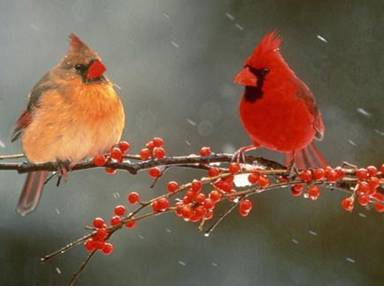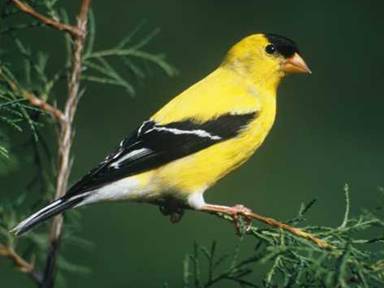Gardens provide pleasure in so many ways. Flowering trees, shrubs, perennials and annuals adorn our gardens with a constantly changing palette of colors. Many plants provide texture, interest and splashes of subtle colors through their intriguing foliage. There’s always something new to attract our interest and admiration of nature’s handiwork.
In addition to the beauty of the plants themselves, a nicely planned garden can be a fascinating place to watch the great variety of birds that inhabit the Chicago area. If your garden provides shelter, food, and water, you can be assured that birds will frequently visit and, perhaps, make their home in your yard.
During the fall and spring, you man see some very unusual birds as they migrate through our area. Your winter garden will be far more interesting if the birds that stay behind decide to make your place a favorite hangout. Of course, summertime means a large number of birds will be residents here and will add their songs to the beauty of your garden.

A female and male Cardinal.
The Illinois state bird, the Cardinal, lives here all year round. The male is brilliantly red and the female is usually a slightly rosy gray. You can easily learn to indentify the Cardinal’s distinctive song and then, in a moment, you’ll locate the birds themselves (they’re usually in pairs). Identifying the Cardinal and its song should be part of everyone’s nature education in this area.
What can you do to insure that your garden is an oasis for an attractive array of birds? Think in terms of the basics. Birds want shelter in order to have a safe place to nest, protection from weather and protection from predators. Trees provide the shelter that birds desire. Dense conifers or evergreens such as Falsecypress, Spruce, Yew, Juniper and Arborvitae provide wonderful hiding places and great safety for birds. Large shade trees (Maple, Elm, Oak, Linden, Hackberry, Birch, etc.) provide safe perches were birds can survey the area for predators before concentrating on feeding.
Birds are also always looking for sources of food. Ornamental trees and shrubs that produce seeds, berries, nuts or fruit will insure that your garden is an avian feasting place. Consider a Crabapple, Amelanchier, Hawthorn, Cotoneaster, Viburnum, Holly, Birch and/or Dogwood. Some perennial flowers produce lots of edible seeds, such as Monarda, Purple Coneflower, and Aster. A few annual flowers also produce bird-attractant seeds such as Cosmos and Cleome and, of course, Sunflowers which are great seed producers that will attract the brilliant yellow Goldfinches.

Hanging a feeder, particularly during the winter, will concentrate bird activity where you can easily see them. You may want to use a mixed seed feeder for most birds and a thistle seed feeder (with tiny holes) for finches.Ideally, there should be a branch or perch within ten feet so that birds can pause and look for dangers before feeding.
The final basic, providing water for birds, can be easily done with an attractive birdbath, a simple bubbling rock, or for an even more year round source, a garden pond which also provides a tranquil oasis for homeowners.
All of the plants that are mentioned above are attractive in their own right and are hardy in our area. Not only will they enhance your garden, providing you with privacy and colorful beauty but, they will provide a safe and happy haven for so many birds during the year. Many a time during spring, summer, fall and winter the beauty and activity of the birds in our yard have fascinated us and made us glad that we thought to provide for them. You will too!
